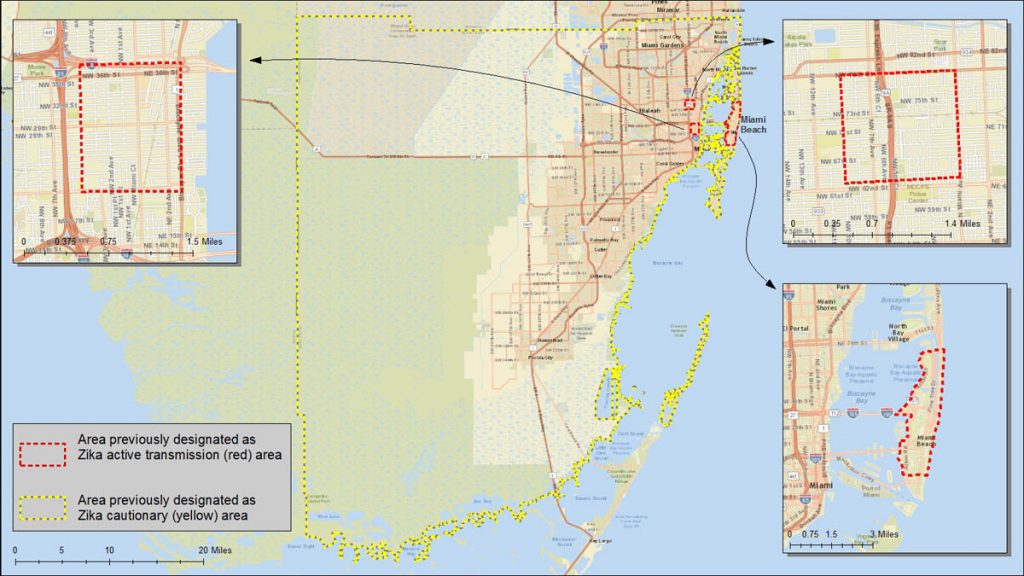In July 2016, the first locally acquired case of Zika in the United States was confirmed in Miami, Florida. To date, every U.S. state and territory has at least one confirmed travel-associated case of Zika. As of late September 2016, Florida is the only state to have confirmed locally acquired cases of the Zika virus. In light of this, the Centers for Disease Control and Prevention (CDC) issued travel warnings for three areas in Miami-Dade County—Wynwood, a local arts district, Little River and Miami Beach, popular tourist destinations.
The CDC previously issued guidance related to Zika for people living in or traveling to Miami-Dade County, advising that pregnant women not travel to this area because of local transmission of the virus. The CDC designates areas for Zika virus transmission prevention in the continental United States and Hawaii as red or yellow. Miami-Dade County was previously designated as a Zika cautionary (yellow) area, but that designation was removed on June 2, 2017. This means that there are no longer any travel recommendations related to Zika virus for Miami-Dade County, Florida. Although the level of risk of Zika virus transmission after a yellow area is removed is unknown, it is likely to be low. However, sporadic cases may still occur. For this reason, the CDC recommends that people living in or traveling to Miami-Dade County continue to protect themselves from mosquito-borne illnesses, including Zika virus.
KEY: Miami-Dade County, FL. Red shows previously designated areas of active transmission where the CDC recommends adherence to travel and testing guidance for pregnant women, women of reproductive age and their partners. Yellow shows previously designated areas where CDC advised cautionary travel recommendations and strict adherence to precautions to prevent mosquito bites.
Credit: Map courtesty of the Centers for Disease Control and Prevention (CDC)
Share this Post

